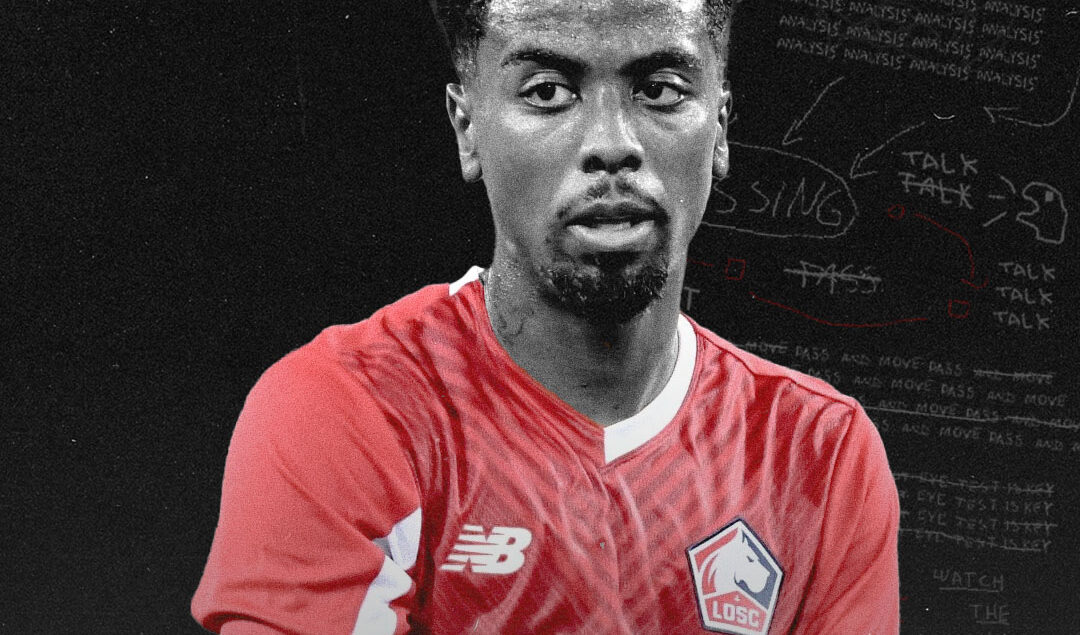Tactical Analysis: Paulo Fonseca’s Lille
It has been three years since Lille edged Paris Saint-Germain to the Ligue 1 title on the final day of the season, claiming their first championship in a decade under Christophe Galtier. They did so on the basis of a French-Portuguese connection, with sporting director Luis Campos crafting a young squad featuring Portuguese players like Renato Sanches, Tiago Djalo, Jose Fonte and Xeka as well as French players like Boubakary Soumare, Benjamin Andre, Mike Maignan, Jonathan Bamba and Jonathan Ikone.
Campos would depart the club midway through the season, whilst Galtier would soon follow, riding off into the sunset and taking charge of Nice. Lille suffered a disappointing 10th-place finish under Jocelyn Gourvennec, with Paulo Fonseca taking charge and becoming the first Portuguese manager in the club’s history. Despite losing key players like Amadou Onana, Sven Botman and Sanches, Les Dogues were able to quickly rebound under Fonseca, finishing fifth in Ligue 1 thanks to a 24-goal haul from Canadian striker Jonathan David.
They are on pace to surpass last season’s finish, with the club currently sitting fourth in the table, one point above Nice and two above Lens, as well as one point behind Monaco and five behind Brest. Whilst they were eliminated by Lyon in the Coupe de France Round of 16, they have taken a huge step towards reaching the UEFA Europa Conference League quarterfinals after thrashing Sturm Graz 3-0 in the first leg of their Round of 16 tie.
Today, we’re breaking down the reasons behind Fonseca’s success at Lille, the tactical set-up and the individual profiles needed to make it all click, and whether or not they can sustain their progress at the Stade Pierre-Mauroy. We start with Lille’s in-possession setup. First of all, Lille line up in a 4-2-3-1 on paper and have not showed much in terms of deviation from their normal XI.
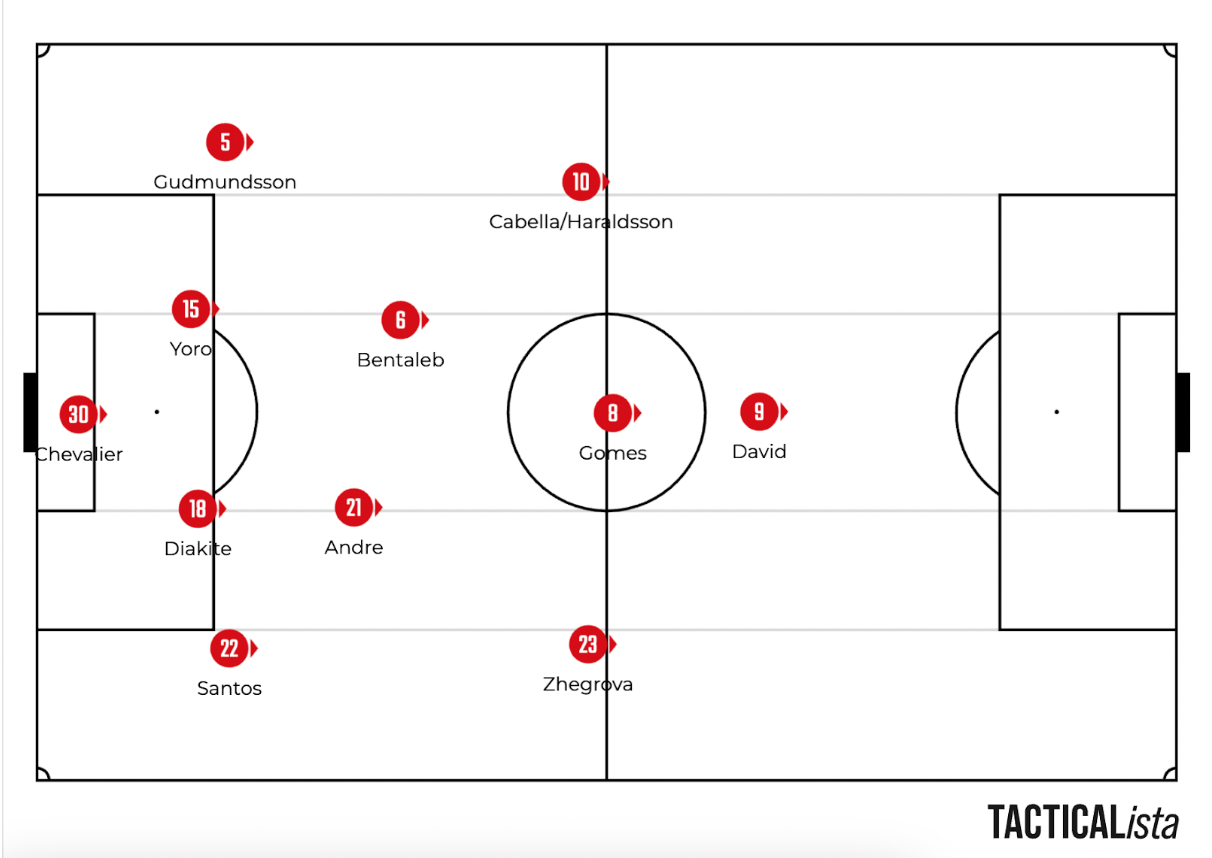
Angel Gomes and Edon Zhegrova are Les Dogues’ most naturally talented players. Zhegrova is a tricky winger, and only 24 years old. The Kosovan has taken 3.22 shots per game so far, but what you can’t measure in metrics is flair, and Edon Zhegrova has plenty of that. Former Manchester United midfielder Angel Gomes is Lille’s creative brain.
Gomes is a high-volume creative passer, and that in combination with Edon Zhegrova and Jonathan David makes for a deadly trio. Starting from deep phase possession with goalkeeper Lucas Chevalier on the ball. In this instance, the defenders split and sit next to the goalkeeper at both sides, with both of the fullbacks up high.
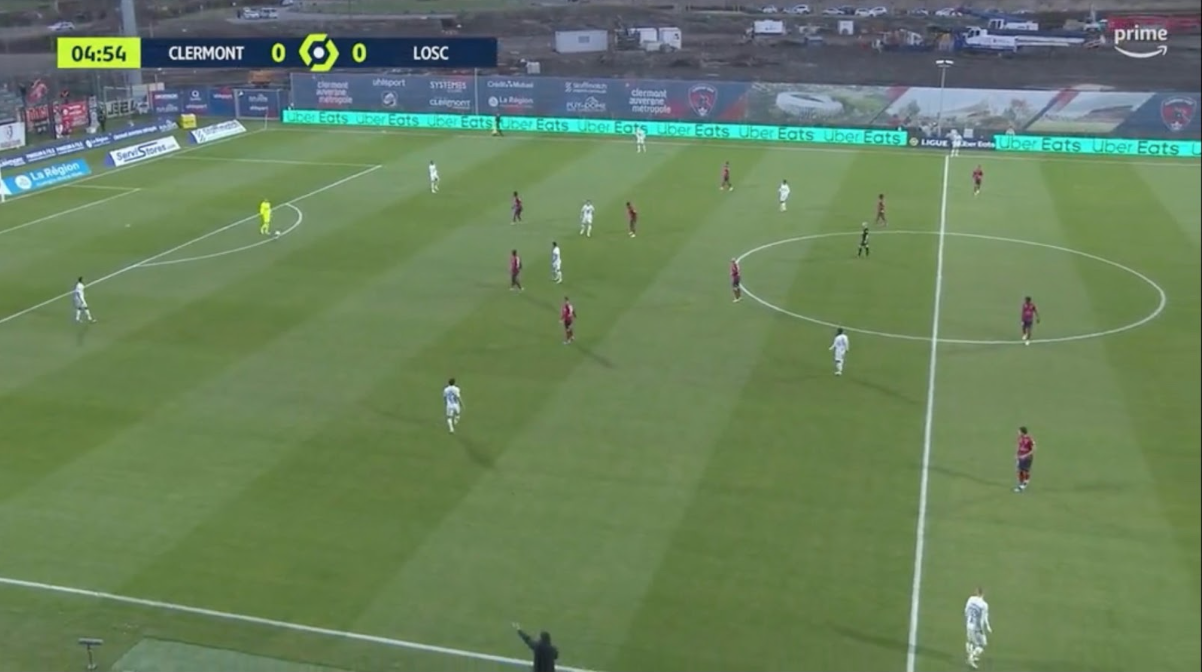
On the ball Chevalier slows play down, not to the extreme of for example Brighton, but slows play down nonetheless. After this Lille move into a 3-2 build up with one of the fullbacks moving up while the other slots in alongside the CB duo. Which fullback slots in depends on the duo that is playing on the day; we have seen the combination of Ismaily-Bafode Diakite and Gabriel Gudmundsson-Tiago Santos. In the first instance, Diakite – a natural center back – is the one who stays back while Ismaily becomes a pseudo winger, in the second instance its left-back Gudmundsson who stays back while adventurous Santos moves up.
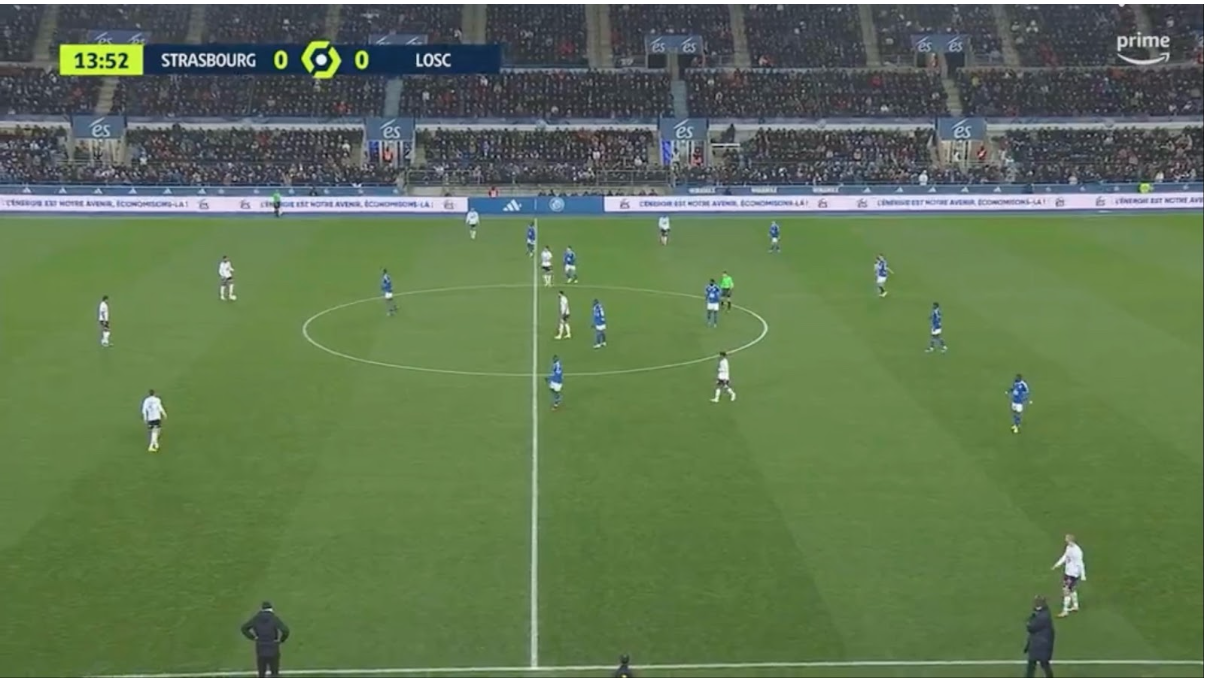
In the first phase of build-up, Lille take a calm approach by slowing play down. The two midfielders in front of the defence are Nabil Bentaleb and Benjamin Andre, but Angel Gomes tends to drop deep and look for triangles with the defenders to help with progressing play.
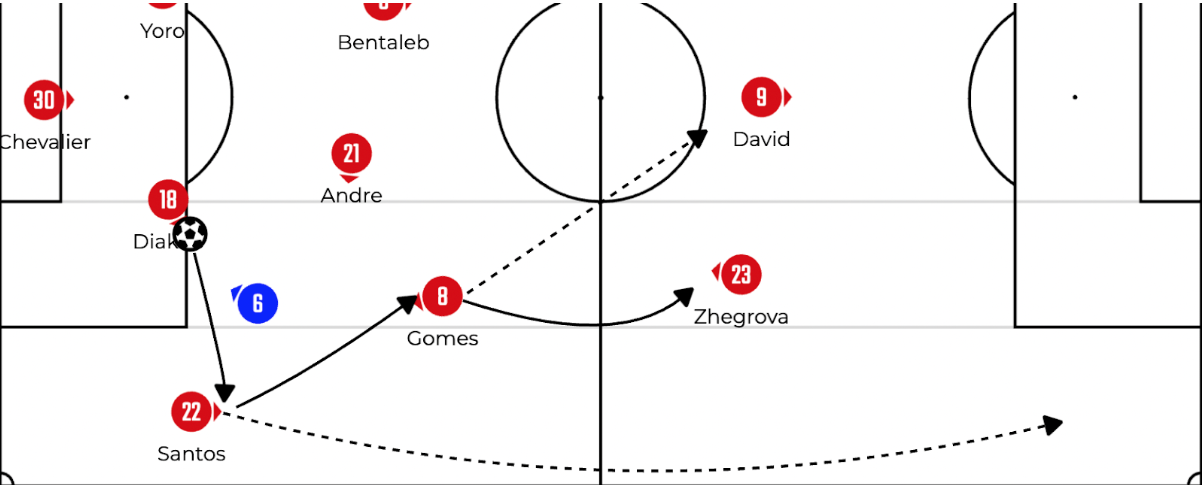
In the image above you can also see what the more adventurous fullback does in possession, the winger on the respective side comes inside and this creates space for the fullback to overlap. This is extremely prominent on the left-hand side, especially when midfielder-in-nature Remy Cabella plays. The Frenchman tucks in very noticeably while left-back Ismaily takes over on the wing. This can be observed in image number three.
As play progresses forward Lille settle into a 3-2-5 formation with again one of the fullbacks slotting in next to the two center backs. Just in front of the three defenders are – most often – Nabil Bentaleb and Andre, the two are tasked with patrolling the midfield and dividing play to the wings. Then the five forwards, Jonathan David moves across to the right alongside Zhegrova, while the attacking midfielder plays through the middle and the left-winger moves inside as the fullback moves up. Of course, the same happens if the fullback on the opposite side comes up, but of course with the opposite winger.
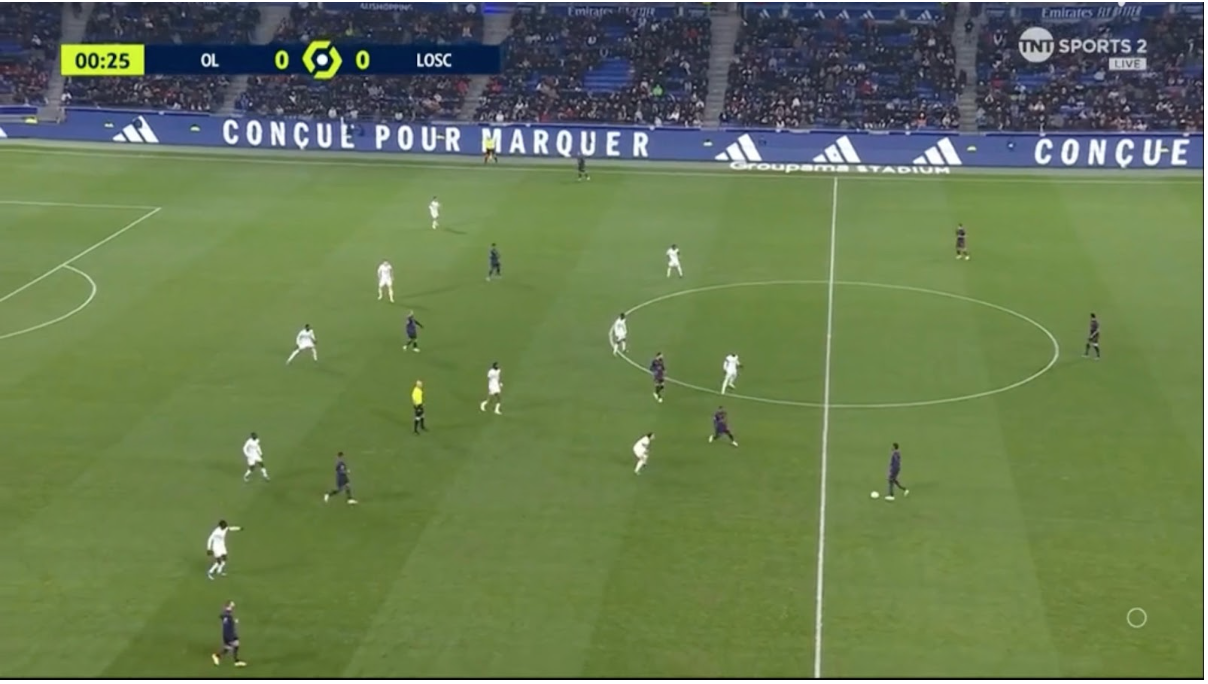
Jonathan David has a very free role in general. The Canadian will switch positions with the wingers or even rotate with the fullbacks, here some principles of juego de posicion (positional play) come up. Most of Lille’s chances come from the wide areas. They do this by – in contrast to their first phase build-up – looking for very quick 1-2 passes and positional rotations to force the opponent to step out and create spaces to run into.
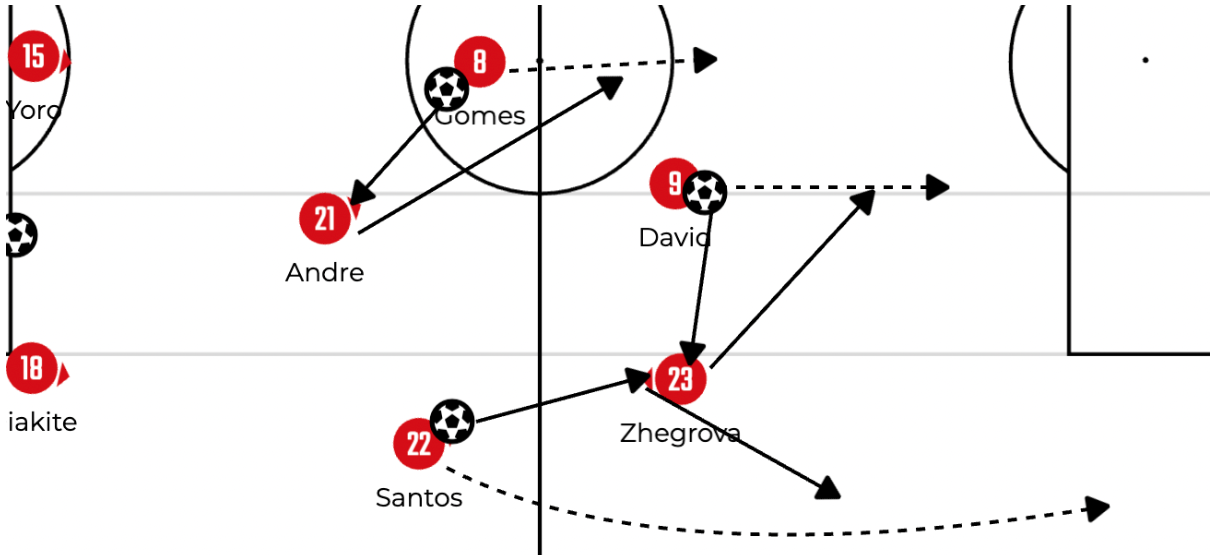
As Lille approach the opposition’s box, the fullback will truly overlap the winger, while Zhegrova tries to isolate a fullback to take on and utilise his creativity. Jonathan David wonders in the box, looking for gaps between defenders and shooting angles. While their slow pace in deep possession pulls the opposition apart, their positional play and quick passing discombobulate the defenders and allow them to create quick and easy chances. Out of possession, Lille are all aggressive and high pressing. They do this in almost a 4-2-4 formation as the attacking midfielder moves up alongside the striker.

Their pressing is aimed at forcing long balls towards the defence because Leny Yoro and the defender alongside him are quite athletic and aerially dominant. They also have a different goal, their pressing traps. For this example, we’ll use David and Zhegrova, the two block passes towards any other player but the winger on the right-hand side, by forcing the ball to this player the fullback can press at full speed and win the ball back quickly.

The midfielders often attach themselves to one of the opposition’s 6s to block off a passing option as well, and due to their field occupation, the opposition can’t find a pass anywhere else. As the ball comes backwards, the winger and the fullback will double up on the opposition’s winger to block off passes into the midfield and to stop the winger from cutting inside easily. The midfielders come back as well, this helps lock off the opposition by playing through the middle.
However, it’s also only right to point out their weaknesses. One of their weak points is their pressing, and some of the players’ lack of will to track back. Instead of sprinting some jog back. This has cost Lille points at times as the opposition can outnumber the fullback two-on-one, this forces the centre-back to shift over and then chaos ensues. If Lille can improve this they will truly become a much better team and more solid defensively.
Les Dogues are in prime position to not only push for Champions League football, but make a deep run in Europe. They are inches away from reaching the quarterfinals of a major European tournament for the first time in club history, and apart from a 0-0 draw at Montpellier on January 28 that saw them fall to 10 men before the break, they have been held scoreless on just two occasions since the October international break: a 0-0 draw at Marseille on November 4 and a 0-0 draw at Clermont Foot on December 10.
Lille have taken eight clean sheets from 11 matches in 2024, opening March with a 1-0 win vs. Reims before thrashing Sturm Graz 3-0 in Austria, and they’ll be looking to continue their impressive run of form with a win on Sunday. Apart from a 1-1 draw vs. PSG, Les Dogues have won each of their last six home matches, and they have the chance to extend that run as they face off against Julian Stephan’s Rennes at the Stade Pierre-Mauroy.
By: Teo Slehofer / @TeoSlehofer
Featured Image: @GabFoligno / ANP – Getty Images
